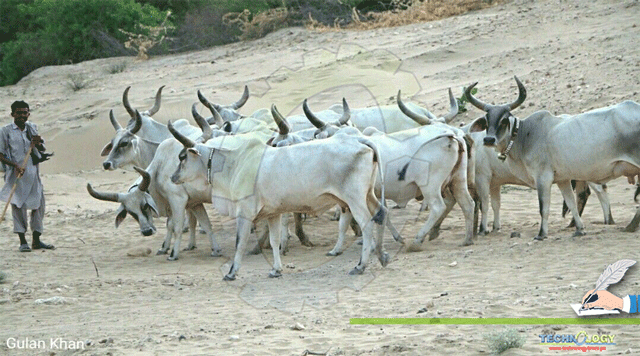1Pakistan Museum of Natural History Islamabad,Pakistan

By Amir Hussain1, H. U. Khan1, Muhammad Ismail Bhatti1, Saadia Munir1, Zil-E-Haleefa1, Ghulam Abbas1
The term Ethno-veterinary is a combination of two words- “Ethno” means race, people or and “Veterinary” means medical treatment of animals, particularly domestic animals. As a consequence, ethno-veterinary refers to the study of traditional knowledge and practices for treating domestic animals that are afflicted with various diseases, animal health care, knowledge, skills, methods and practices. Herbal medicines are widely used to treat and prevent various health-related ailments in animals. Famine and natural disasters have caused cattle mortality in the deserts of southern Sindh, Pakistan. Livestock is a major source of income for locals in deserts. The majority of livestock producers in Pakistan’s deserts are impoverished, with an average of 6 to 7 animals per household. They cannot afford expensive allopathic treatments, which leads to different livestock diseases and, in turn, hinders local people’s economic development EVMs can be used to cure ailments in livestock and other grazing animals in desert regions as an alternative medicine. EVMs can contribute to a better standard of living and economic advancement. Because of the vast diversity of plants and animals, Sindh Southern desert is known as the “green desert of the world. Sindh Southern Deserts are a hot, arid-semiarid sandy desert with a range of valuable medicinal plants and an ecosystem characterized by a number of features.
The temperature fluctuates from 20 to 51 degrees Celsius, with the hottest months being May to July, when the temperature reaches its highest point, and the coldest months being January and February. The majority of Sindh southern desert is arid, with dry seasons occurring in clusters. The average rainfall is between 88 and 135 mm, with the monsoon season lasting from May to July. Small to large sand dunes occupy a range of attractive medicinal plant species in most of Sindh-Southern Pakistan’s Desert regions, providing enough biomass for animal consumption. Many indigenous tribes and traditional healthcare systems across the world have used medicinal plants as ethno-veterinary medications for ages. Ethno-veterinary remedies have been utilized in the Desert since prehistoric times. Ethno-veterinary traditions are rich and fertile, forming an intrinsic part of the family and playing a significant religious and economic social role. The tribe members are familiar with the ideas, procedures, and abilities involved in the administration of health care and livestock. Livestock helps to the socioeconomic development of rural people in a variety of ways. Because other economic sectors have inelastic labor absorption capacity, the livestock industry has the potential to produce additional employment opportunities, particularly for marginal and small-scale farmers and landless workers, who control over 70% of the country’s cattle. Given the richness of plant species associated to livestock, culture, the environment, and medicinal plants, there may be valuable herbal recipes used by rural people for cattle health and livelihood. Ethno-veterinary information, like many other customary knowledge systems, is typically transmitted vertically or horizontally over generations, primarily by oral transmission, leaving just a small amount of it available to science. Due to insufficient recordkeeping, the death of senior members of the tribe or group, fast industrialization, and a lack of interest among the younger generation in traditional activities, this traditional oral knowledge is on the danger of extinction. Furthermore, the current generation is uninterested in understanding ancient herbal techniques and, as a result, is less competent. People living in distant and marginal areas rely heavily on traditional herbal medicines to heal their domestic animals, hence ethno veterinary care is critical in many rural locations across the world In Pakistan, populations living in isolated parts of the Southern Deserts of Sindh Pakistan, particularly those still committed to pastoralist traditions, have significant ethno veterinary herbal knowledge, which they occasionally employ to heal their animals. The study’s main goal is to highlight the principal plant species and their recipes utilized by local people to cure various illnesses in livestock and grazing animals.